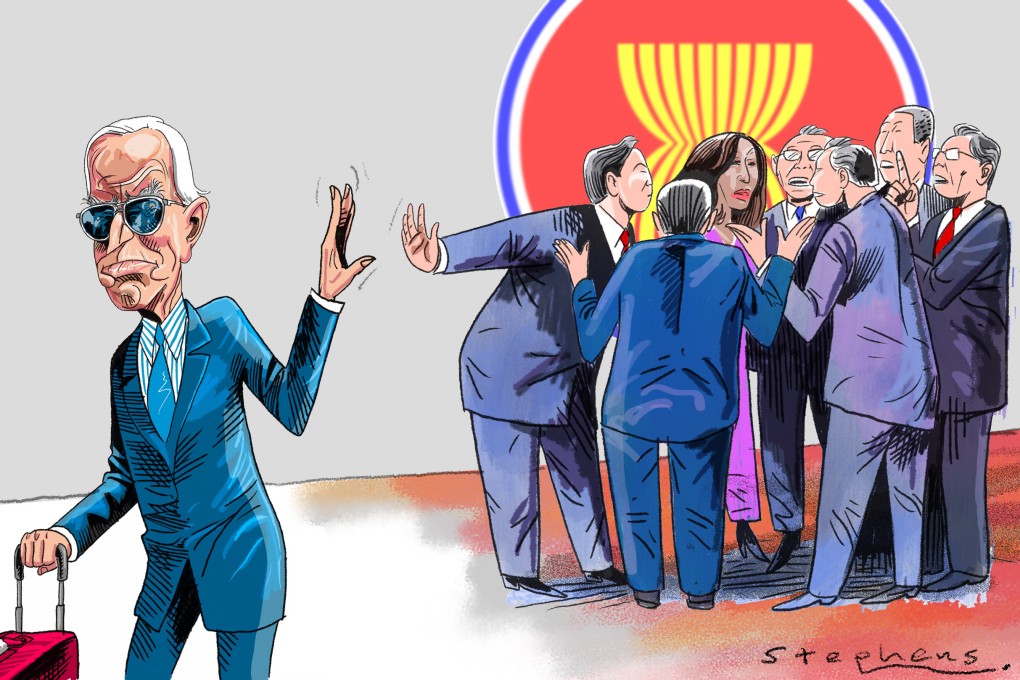Advertisement
Opinion | No Biden, no problem: Asean just has to forge its own path
- Joe Biden’s no-show at next month’s Asean Summit is a calculated decision taken in US interests – nothing more, nothing less
- Instead of feeling slighted, the bloc should redouble its efforts to strengthen intraregional integration and seize emerging opportunities for strategic cooperation
Reading Time:4 minutes
Why you can trust SCMP
6

It’s official: US President Joe Biden will head to the G20 Leaders’ Summit in India, and Vice-President Kamala Harris will attend the Asean Summit-related meetings in Indonesia next month. There, she will underscore America’s “enduring commitment to Southeast Asia and to Asean centrality”, according to a White House briefing by national security adviser Jake Sullivan.
Sullivan rightly points out that there has been an “unprecedented expansion in US-Asean relations” since Biden took office, especially when contrasted with the Trump administration’s record across the board. Regional states have felt heard. The United States, along with its allies and partners, seems to have taken on board Southeast Asia’s repeated exhortations of treating the Association of Southeast Asian Nations on its own merits.
Recent G7 and Quad leaders’ statements pledge “unwavering support” for Asean centrality. Despite Washington’s uneven prioritisation of Southeast Asian countries as well as its economic policy shortfalls, the Biden administration deserves credit for trying to improve ties with the region.
Of course, the office of the US vice-president is nothing to sniff at and Southeast Asian leaders will no doubt warmly welcome Harris to her first Asean-level engagement, initiating her into the endearingly awkward rite of the cross-armed handshake.
However, in a high-context culture like Southeast Asia where symbols, protocols and customs are themselves a form of communication, what is unstated is as telling as what is verbalised. Silence can be deafening; absence can be revealing.
Asean leaders meet twice a year at the summit level, as required by Article 7(3) of the Asean Charter, and since 2009, the second meeting of the year has typically been convened in October or November. This year will only be the second time since 2009 that they will meet in September.
Advertisement
